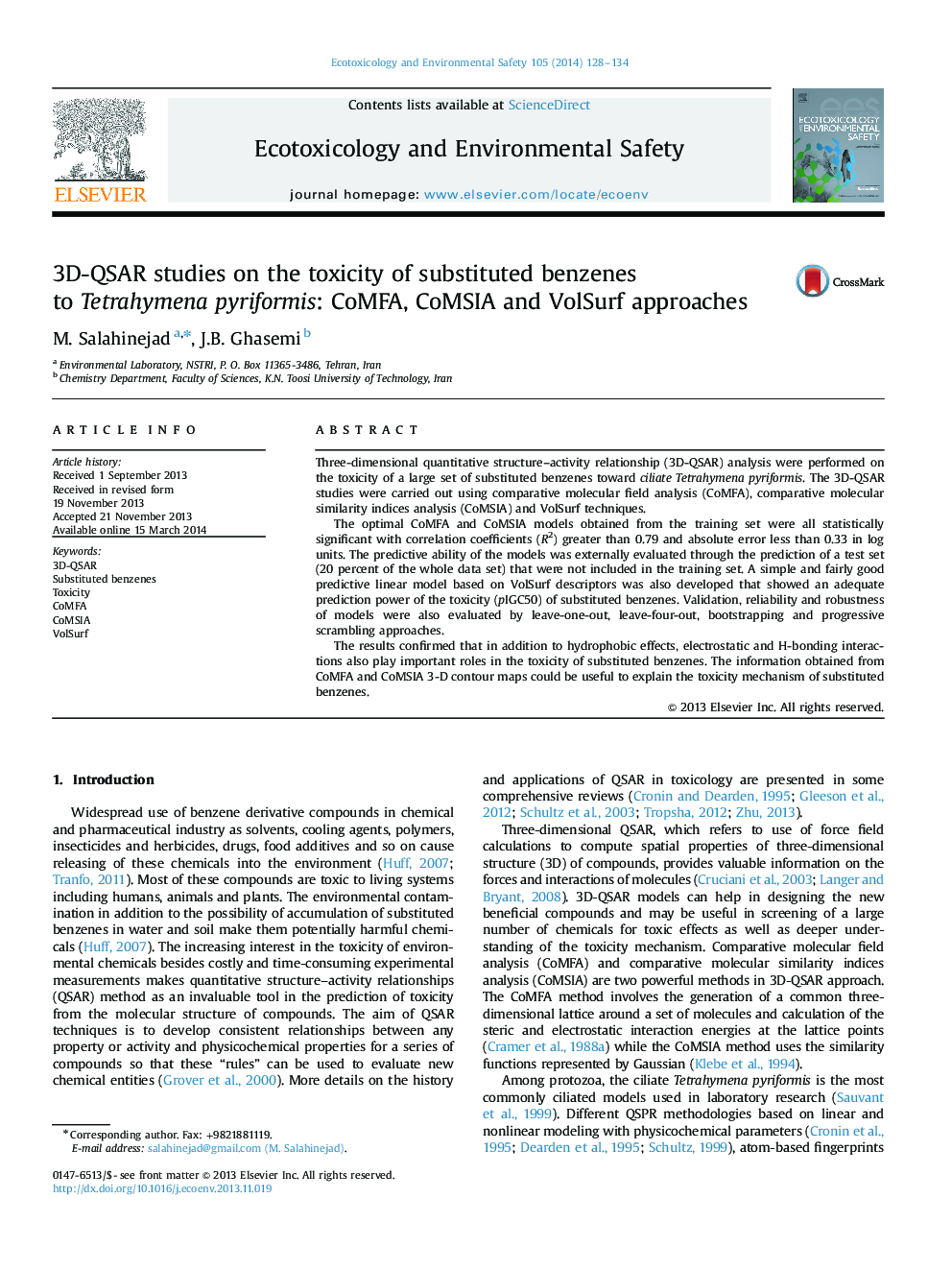| Article ID | Journal | Published Year | Pages | File Type |
|---|---|---|---|---|
| 4420065 | Ecotoxicology and Environmental Safety | 2014 | 7 Pages |
•CoMFA and CoMSIA approaches were successfully applied to predict toxicity of substituted benzenes toward Tetrahymena pyriformis.•A simple and fairly good predictive linear model based on VolSurf descriptors was also developed.•The obtained results could be used to explain of the toxicity mechanism and to improve useful information about toxicity.•The 3D-QSAR models are superior to previously reported models due to their combination of quality and information.
Three-dimensional quantitative structure–activity relationship (3D-QSAR) analysis were performed on the toxicity of a large set of substituted benzenes toward ciliate Tetrahymena pyriformis. The 3D-QSAR studies were carried out using comparative molecular field analysis (CoMFA), comparative molecular similarity indices analysis (CoMSIA) and VolSurf techniques.The optimal CoMFA and CoMSIA models obtained from the training set were all statistically significant with correlation coefficients (R2) greater than 0.79 and absolute error less than 0.33 in log units. The predictive ability of the models was externally evaluated through the prediction of a test set (20 percent of the whole data set) that were not included in the training set. A simple and fairly good predictive linear model based on VolSurf descriptors was also developed that showed an adequate prediction power of the toxicity (pIGC50) of substituted benzenes. Validation, reliability and robustness of models were also evaluated by leave-one-out, leave-four-out, bootstrapping and progressive scrambling approaches.The results confirmed that in addition to hydrophobic effects, electrostatic and H-bonding interactions also play important roles in the toxicity of substituted benzenes. The information obtained from CoMFA and CoMSIA 3-D contour maps could be useful to explain the toxicity mechanism of substituted benzenes.
